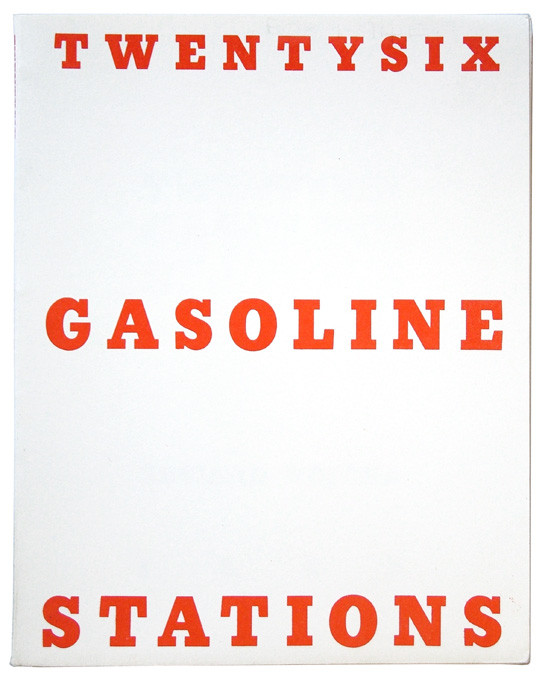The conceptual artist's book
Are all artists' books conceptual?

This fall I am co-organizing a symposium through the Simpson Center for the Humanities at the University of Washington called “Affect and Audience in the Digital Age.” A collaboration between researchers in poetics from the Bothell and Seattle campuses of UW, our event explores the impact of digital mediation on contemporary poetry. Here is how my co-organizers Sarah Dowling, Brian Reed, and Gregory Laynor and I describe it on the conference website:
Audience in the Digital Age is a one-day symposium exploring emergent modes of creative public scholarship. Specifically, we are interested in scholarly, pedagogical, curatorial, and creative practices that attend to the digitally mediated character of contemporary poetry. While poets have long enjoyed a position as public intellectuals, teaching readers through carefully constructed emotional appeals, much poetic work is now written through impersonal digital methodologies such as crowd sourcing and data mining. Nevertheless, digitally mediated poetics have a particular affective density: even appropriated text from the Internet conveys the “powerful feelings” that Wordsworth described as the ideal for poetry. Given the new realities of digital composition and distribution, how has the position of the poet changed? Can digital mediation impact the direction in which knowledge and expertise flow? Where is creativity located now?
Confirmed participants so far include Kate Durbin, Rachel Zolf, Ray Hsu, and Adam Frank, who will both share and theorize recent work that straddles poetry, performance, and public scholarship.
As part of our event, we are assembling an exhibition of artists’ books that utilize some of the seemingly affectless approaches that have been facilitated by digital media, including crowd-sourcing, appropriation, data-mining, and remix. The exhibit will draw on the vast book arts collection at UW (curated by the amazing Sandra Kroupa, who is a living, breathing catalogue of the over 21,000 pieces in the collection), as well as a selection of European small press publishers curated by A. Salinas and A. Bergman, who join UW Bothell’s faculty this fall.
As I delve into this material in preparation for the October symposium, I will be sharing my findings here, in show-and-tell style posts that attempt to open up the conversation about this subset of contemporary artists’ book production that overlaps significantly with contemporary experimental and innovative poetry. I am calling these “conceptual artists’ books,” for lack of a better term, because their appropriative strategies are largely associated with conceptual writing and art. However, the book arts themselves have a history of citational and conceptual methods (often containing poetry or writing not generated by the artist, and in many cases relying on manipulations of found imagery), and one might say that artists’ books are conceptual by definition, given the fact that, as Johanna Drucker defines them in The Century of Artists’ Books, “[An artist's book] integrates the formal means of its realization and production with its thematic or aesthetic issues. […] It has to have some conviction, some soul, some reason to be and to be a book in order to succeed.” Does the artist’s book’s fundamentally self-reflexive nature (by choosing to use the book form, the artist is always in some way interrogating what a book even is) make it conceptual? Are all artists’ books to an extent the execution of an idea that drives the work?
I resist making any blanket statement, but I will say that many artists’ books fit this theme, so in the interest of cohesion, I will focus on works that take advantage of not only the ubiquity of digital information, but also the increasing accessibility of inexpensive digital printing, which enables the fabrication of books that might otherwise be considered too expensive or labor-intensive to produce, or in some cases just plain unsellable. Transformations of the market through small press publishing, self-publishing, Kickstarter and social media also facilitate the distribution of such “esoteric” works and certainly play a role in the current vogue for such projects. A cool idea for a book no longer need simply remain an idea, since the digital landscape eases both the publication and public reception of such works (thanks to Lulu, Blurb, Amazon, Issuu, UBU, and even Risograph printing).
Such print-on-demand and conceptual books are clearly in a lineage with Ed Ruscha’s books, like Twentysix Gasoline Stations (pictured above), which were printed and sold at an affordable price point (about $15), and which are now priceless because their ephemeral nature means many are falling apart or have been discarded. I am not staking Ruscha’s democratic multiples (to use Drucker’s term) as the origin point for the artist’s book, but rather a specific kind of mass-produced artist’s book with which much contemporary conceptual publishing is in dialogue – I’ll feature a series of POD artists’ books that have been created in response to Ruscha’s work in a future post, and I’m sure many Jacket2 readers have seen the recent MIT Press book tracing its reverberations through contemporary art.
I will use the space of these commentaries to begin to map this current trend and to place these more “democratic” publications in conversation with unique and limited-edition artists’ books that touch on the same techniques and ideas. Because I will be posting things as I find them (and as they are recommended to me by others --please get in touch with me using the link at right!), this commentary will be partial, multifarious, and exploratory. Books may be posted alone or in thematic groupings, and I will occasionally profile an individual artist. I hope some interesting intersections will arise.
Selected further reading:
Sarah Bodman and Tom Sowden, Manifesto for the Book (Center for Fine Print Research, Bristol UK, 2010, freely available online): Addresses the role of technology and print-on-demand publishing in contemporary book arts practice.
Johanna Drucker, The Century of Artists’ Books (New York: Granary Books, 1995): A seminal text in outlining the history of, and recurrent themes in, the artist’s book.
Artists' books in the age of digital publishing